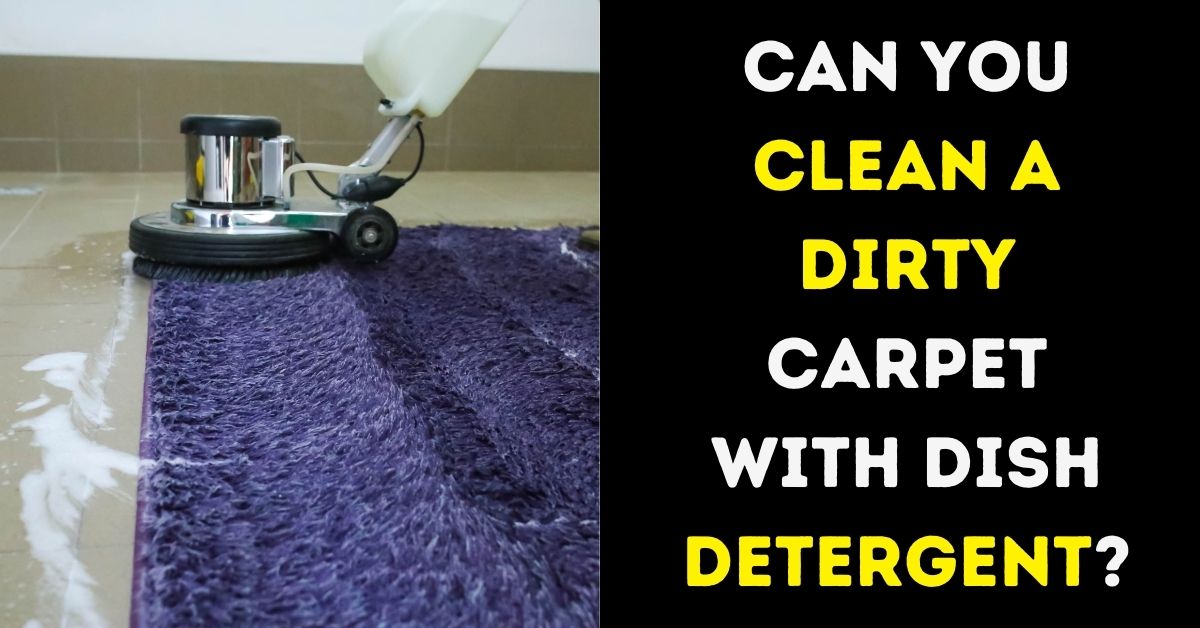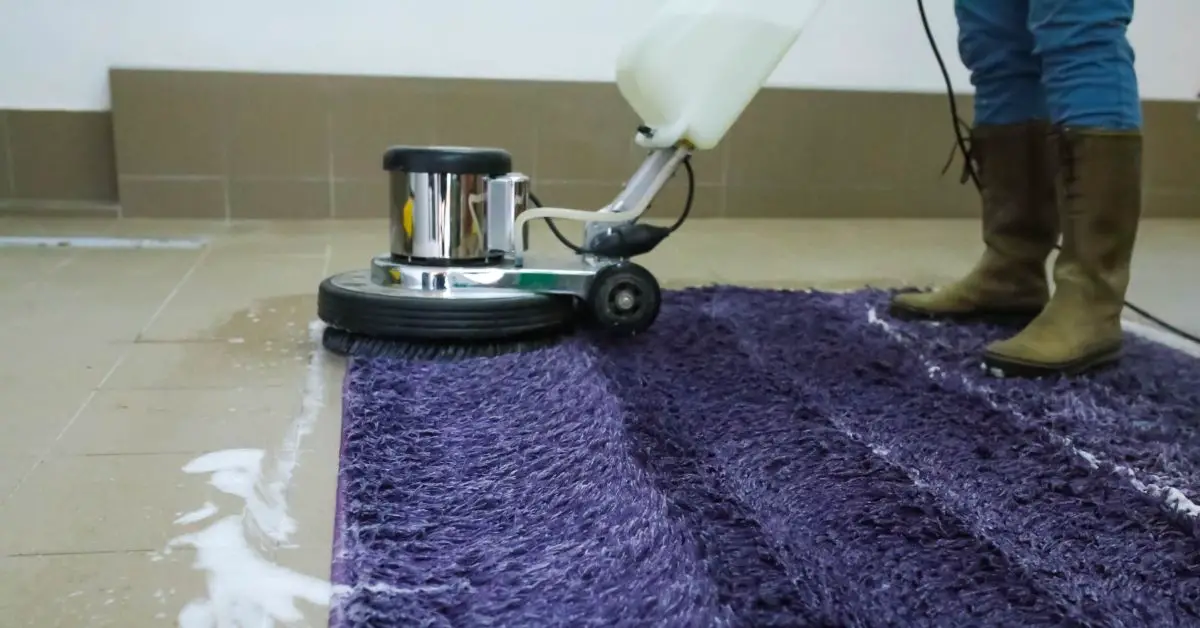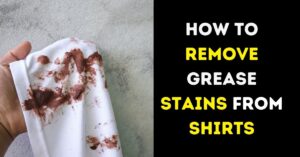
When faced with the difficult task of cleaning a dirty carpet, many often turn to conventional carpet cleaners or professional services.
However, there’s a surprising contender in carpet cleaning – dish detergent. In this article, we will discuss the idea of using dish detergent to clean your carpets. So, can you clean a dirty carpet with dish detergent?
Cleaning a dirty carpet with dish detergent is possible, but it’s not the most effective or recommended method for deep cleaning. Dish detergent is meant to cut through grease and food residues on dishes, and it may not be the best choice for cleaning carpets.
Steps to Clean a Dirty Carpet with Dish Detergent

1. Gather Your Supplies
Before embarking on your carpet cleaning journey, gathering all the necessary supplies is essential. You will need mild, non-bleaching dish detergent, warm water, clean white cloths or sponges, a spray bottle, a bucket, a vacuum cleaner equipped with a brush attachment, a soft-bristle brush or an old toothbrush.
2. Prepare the Carpet
Start by preparing the carpet for cleaning. Use the vacuum cleaner with a brush attachment to thoroughly vacuum the carpet. This step is essential as it removes loose dirt and debris from the surface, allowing the detergent solution to work more effectively.
If there are specific stains on your carpet, gently blot them with a clean cloth to remove as much of the stain as possible before cleaning.
3. Detergent Solution
Combine approximately a gallon of warm water in a bucket with 1-2 tablespoons of mild dish detergent. It’s crucial not to overdo the detergent, as an excessive amount can leave behind soap residue that is difficult to rinse.
4. Testing
Before applying the detergent solution to your entire carpet, perform a pre-test on a small, inconspicuous area. Apply a small amount of the diluted detergent solution and gently blot it with a clean cloth. This test ensures that the detergent doesn’t cause color fading or damage to your carpet.
5. Apply detergent
If the test is successful, apply the detergent solution to the entire carpet. Pour the diluted detergent solution into a spray bottle to make application easier. Spray the solution evenly over the carpet’s surface, taking care not to saturate it excessively.
6. Scrubbing
Use a soft-bristle brush or an old toothbrush to scrub the carpet gently. Pay particular attention to stained or heavily soiled areas. To ensure thorough cleaning, work in small sections, starting from one corner of the room and systematically covering the entire carpet.
7. Blot and Rinse
After scrubbing, use clean white cloths or sponges to blot away the soapy residue and loosened dirt. Remember to rinse the cloth or sponge frequently in clean water to prevent dirt spreading.
8. Rinse the Carpet
Fill a spray bottle with neat and cold water and lightly spray the carpet to rinse away any remaining soap residue.
9. Blot Again
Once you’ve rinsed the carpet, blot it again with clean cloths or sponges to remove excess water and ensure the carpet dries faster.
10. Drying
Allow the carpet to air dry completely. Ensure proper ventilation in the room to expedite the drying process. It’s important not to walk on the carpet until it’s scorched to prevent new dirt from settling in.
11. Final Vacuuming
When the carpet is completely dry, vacuum it again using the vacuum cleaner’s brush attachment. This step helps fluff the carpet fibers and removes any remaining dirt or detergent residue, leaving your carpet fresh and refreshed.
Limitations of Using Dish Detergent for Carpet Cleaning
1. Residue Buildup
Dish detergents are designed for dishes, not carpets. They can leave a soapy residue on your carpet fibers. If not rinsed thoroughly, this residue can attract dirt and lead to rapid re-soiling, making your carpet appear dirty again soon after cleaning.
2. Potential Color Fading
Some dish detergents may contain dyes or additives that can interact with the dyes in your carpet, causing color fading or discoloration. This is particularly risky with brightly colored or patterned carpets.
3. No Stain Removal Guarantee
While dish detergent can help with general dirt and grime, it may not be effective at removing tough stains such as red wine, pet urine, or ink. Specialized carpet stain removers or professional services may be required for stubborn stains.
4 Not Suitable for All Carpets
Dish detergent may work better on synthetic carpets than on natural fibers like wool. Wool carpets are more delicate and require milder cleaning solutions to avoid damage.
5. Risk of Over-Wetting
Using too much water or detergent when cleaning with dish detergent can lead to over-wetting, which may cause mold and mildew growth within the carpet, creating an entirely new set of problems.
6. Lack of Odor Control
Dish detergent may not effectively eliminate odors from your carpet, especially if the odors are deeply embedded. For odor removal, you may need specialized carpet deodorizers or professional treatments.
7. Longer Drying Time
Due to the potential over-wetting and the need for thorough rinsing, carpets cleaned with dish detergent may take longer to dry. Prolonged dampness can contribute to mold growth and may be inconvenient for regular foot traffic.
8. Not Ideal for Allergies
The fragrances and additives in some dish detergents can exacerbate allergies or sensitivities for some individuals. It’s important to choose a mild, unscented dish detergent if you have allergies.
What Is the Best Way to Clean a Very Dirty Carpet?
Cleaning a heavily soiled carpet requires a strategic approach to ensure it looks fresh and clean once again:
1. Start with a Thorough Vacuuming
Before you even think about getting the carpet wet, grab your vacuum cleaner. Your carpet is the giant air filter, trapping dry soil and pet hair. Vacuuming first removes this initial layer of dirt and grime, making the deep cleaning more effective.
2. Choose the Right Cleaning Solution
Don’t underestimate the importance of a good cleaning solution. Opt for a quality product like “Ultra Pack Traffic Clean” from Prochem for professional results without leaving any sticky residues.
3. Pre-Treat with a Pump-Up Sprayer
Use a pump-up sprayer to evenly distribute the cleaning solution across the carpet. Let it sit for 5-10 minutes to allow the soap to loosen and dissolve the dirt and grime within the carpet fibers.
4. Properly Use Your Carpet Cleaning Machine
Whether you’re using a store-bought machine or renting one, the rules are the same. Fill the fresh water tank with warm water only, as you want it to rinse out the dirt and soap.
Clean the carpet slowly to ensure thorough rinsing and extract as much moisture as possible. If an area isn’t cleaning up well, go over it again after re-pre-treating.
5. Speed Up Drying
Quick drying is essential to prevent mold and mildew growth. Use fans to promote airflow and set the room temperature to around 70°F. Additionally, a carpet grooming rake can help stand up the fibers, facilitating faster drying.
Conclusion
When dealing with a very dirty carpet, it’s vital to weigh the limitations of using dish detergent. While it can be a makeshift solution, it has drawbacks, including residue buildup, potential color fading, and ineffectiveness against tough stains.
For optimal results, especially with heavily soiled or stained carpets, consider specialized carpet cleaning products or professional services. These alternatives are tailored to specific needs and minimize risks like over-wetting or extended drying times.






